- Biographical
– Doug Perry
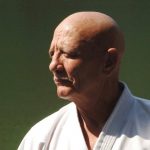 Doug Perry began his fighting career in 1946 as an amateur boxer in Charlotte, N.C. at age of nine. During his boxing career he participated in 147 bouts in the Golden Glove, AAU, and the Marine Corps. He won state, regional and national titles and officially retired from the ring in 1959 following the trials for the 1960 Olympics. At the age of 14, he had the distinction of fighting a four-round exhibition match against bantamweight champion of the world, Willie Pep.
Doug Perry began his fighting career in 1946 as an amateur boxer in Charlotte, N.C. at age of nine. During his boxing career he participated in 147 bouts in the Golden Glove, AAU, and the Marine Corps. He won state, regional and national titles and officially retired from the ring in 1959 following the trials for the 1960 Olympics. At the age of 14, he had the distinction of fighting a four-round exhibition match against bantamweight champion of the world, Willie Pep.
Hanshi Perry started his martial arts training in September 1956 at Parris Island. Since that time has had the opportunity to train under Hanshi Tatsuo Shimabuku in Ishshinryu Karate-Do at the old Agena dojo in Okinawa. He studied with Kyoshi Bill Hayes of Shobayashi Ryu, one of Hanshi Eizo Shimabukuro’s senior students. This karate relationship and special friendship has lasted for over 30 years. While again stationed in Okinawa, Doug had the additional honor of interacting with Sensei Kanei Uechi of Uechi-ryu and Sensei Takemyoshi of an Old Okinawan Family System.
During the period 1974-75, again in Okinawa, he studied with Kyoshi Jiro Shiroma, a senior student of Hanshi Shugoro Nakazato. Since that time, he has been a student of Hanshi Nakazato. In 1997, Doug received the rank of Hachidan from Hanshi Nakazato and was appointed to represent the Shorinryu Shorinkan Kyokai in North America. Doug presently operates a small dojo in Hendersonville, N.C.. Sensei Perry received his Kudan promotion in 2008 from Hanshi Nakazato.
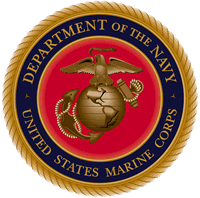 Military Background
Military Background
Doug Perry joined the Marine Corps as a private in June, 1956. He retired as a “Mustang” Major in 1981 after over 24 years of service to corps, country, and his fellow marines. He had a varied career in the Corps, serving over the years as Browning automatic rifleman (Barman), nuclear weapons intelligence/security NCO, and as an infantry platoon Sergeant (1st. Vietnam tour)
Returning to the “World” in 1966, he was assigned to a tour of duty with the Joint Chief of Staff in the Pentagon. He received a commission to second Lieutenant and was ordered back to Vietnam in 1968. During this tour he served as a reconnaissance platoon commander “rough rider” convoy commander, platoon commander, “Echo Sector” commander, Quang T ri combat base and as a company commander. During this period, he was awarded the Purple Heart for wounds received in operations against the enemy.
ri combat base and as a company commander. During this period, he was awarded the Purple Heart for wounds received in operations against the enemy.
Returning to the States in 1970, he was assigned to the 2nd. Marine Aircraft Wing. Upon promotion to Captain he was again assigned to the Western Pacific in 1974. While basically stationed on Okinawa, he never the less found the time to participate in operations and evacuations in Vietnam and Cambodia.
Major Perry finished his career as the Command Adjutant MCDEC Quantico, Va. And as 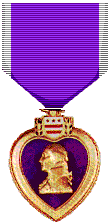 usual, various other “collateral” assignments, including the Iranian hostage crisis in 1979-80. Major Perry’s “personal” decorations include: purple heart medal, the meritorious service medal, joint service commendation medal, navy commendation medal w/combat “V”, combat action ribbon, Vietnam honor medal, Vietnamese cross of gallantry, and good conduct medal. Additionally, he has earned many other combat and service related ribbons and medals.
usual, various other “collateral” assignments, including the Iranian hostage crisis in 1979-80. Major Perry’s “personal” decorations include: purple heart medal, the meritorious service medal, joint service commendation medal, navy commendation medal w/combat “V”, combat action ribbon, Vietnam honor medal, Vietnamese cross of gallantry, and good conduct medal. Additionally, he has earned many other combat and service related ribbons and medals.
– Shugoro Nakazato
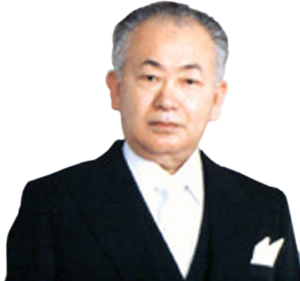 Shūgorō Nakazato (仲里 周五郎 Nakazato Shūgorō, August 14, 1920 – August 24, 2016) was born in Naha city, Okinawa on August 14, 1919. At the age of 16, while attending normal school in Osaka, Japan in 1935, he began his lifelong karate study under the direction of Ishu Seiichi. Nakazato studied under Sensei Ishu for six years. During World War II he was in the Japanese cavalry. Following the surrender of Japan, Nakazato returned to his home in Okinawa to find his family a casualty of the war.
Shūgorō Nakazato (仲里 周五郎 Nakazato Shūgorō, August 14, 1920 – August 24, 2016) was born in Naha city, Okinawa on August 14, 1919. At the age of 16, while attending normal school in Osaka, Japan in 1935, he began his lifelong karate study under the direction of Ishu Seiichi. Nakazato studied under Sensei Ishu for six years. During World War II he was in the Japanese cavalry. Following the surrender of Japan, Nakazato returned to his home in Okinawa to find his family a casualty of the war.
In June 1946, he began his study of karate under Chosin Chibana, who was the Menkyo inheritor of Anko Itotsu. In 1948 Chibana’s Shuri dojo closed, but Nakazato continued his study with Master Chibana, being personally tutored for over a year in Chibana’s own home. In 1951 Nakazato was instrumental in helping Chibana open his new dai ichi dojo in Naha city at Matsuo. Chibana continued his personal teaching of Nakazato at the dai ichi dojo until January 10, 1954, when Nakazato received his Shihan Menkyojo and became Master Chibana’s Shihan dai (Main Assistant). After working as the Shihan dai in the Matsuo dojo under Chibana’s direction for one and a half years, Nakazato was commissioned by Chibana to found the Shorin-Ryu Shorin Kan Nakazato dojo in Naha city at Aza.
Nakazato was appointed as one of the directors of the Okinawan Karate Federation when it was formed in 1956 with the four major (shiryuha) systems of karate in Okinawa (Goju-Ryu, Ueichi-Ryu. Shorin-Ryu (Ko) and Shorin-Ryu (Matsu). During this time Nakazato devoted all of his time and energy to teaching and perfecting Shorin-Ryu karate. In 1960, the Okinawan Karate Federation promoted him to Eighth Degree Black Belt and titled him Kyoshi. Seven years later Nakazato continued his progress in karate when Master Chibana and the Okinawan Shorin-Ryu Karate-Do Kyokai promoted him to Ninth Degree Black Belt and bestowed the title Hanshi on him.
Nakazato began his study of weapons almost from the beginning of his training in 1935. He was trained in the sai, bo, nunchaku, tonfa. and nicho kama, but specialized in bojutsu for four years. Throughout his career he has given of his knowledge willingly. He has demonstrated his technique of karate all over the world and has made many trips to America in the furtherance of Karate-Do. When Master Chibana passed away in February 1969, Shugoro Nakazato inherited the leadership of Okinawan Shorin-Ryu Karate-Do, thus becoming a Tenth Degree Black Belt.
– Chibana Chibana
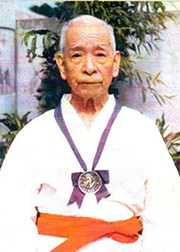 Chōshin Chibana (知花 朝信 Chibana Chōshin, 5 June 1885 – 26 February 1969) was an Okinawan martial artist who developed Shorin-ryū karate based on what he had learned from Ankō Itosu. He was the last of the pre-World War karate masters, also called the “Last Warrior of Shuri” He was the first to establish a Japanese ryu name for an Okinawan karate style, calling Itosu’s karate “Shorin-Ryu” (or “the small forest style”) in 1928. Chibana Chōshin was born as the second son of Chibana Chohaku and wife Nabi on 5 June 1885. The family held a distinguished history and resided in Okinawa’s Shuri Tori-Hori village (presently Naha City, Shuri Tori-Hori Town).
Chōshin Chibana (知花 朝信 Chibana Chōshin, 5 June 1885 – 26 February 1969) was an Okinawan martial artist who developed Shorin-ryū karate based on what he had learned from Ankō Itosu. He was the last of the pre-World War karate masters, also called the “Last Warrior of Shuri” He was the first to establish a Japanese ryu name for an Okinawan karate style, calling Itosu’s karate “Shorin-Ryu” (or “the small forest style”) in 1928. Chibana Chōshin was born as the second son of Chibana Chohaku and wife Nabi on 5 June 1885. The family held a distinguished history and resided in Okinawa’s Shuri Tori-Hori village (presently Naha City, Shuri Tori-Hori Town).
His family traced their lineage from a branch of the Katsuren Court and Choharu, Prince of Kochinta, fifth son of King Shoshitsu (Tei), but lost their titles and status after Mutsuhito, the Meiji Emperor, banned the caste system in Japan. To support themselves, the family turned to sake brewing.
Choshin began his study of martial arts under Ankō Itosu in 1899 when he was about fifteen years old. He applied to be and was accepted as a suitable candidate for instruction, and for thirteen years until he turned 28, Choshin trained under Itosu. When Itosu died at the age of 85, he continued to practice alone for five years, and then opened his first dojo in Tori-hori district at 34. He later opened a second dojo in Kumojo district of Naha City.
During the World War II Battle of Okinawa, Chibana lost his family, his livelihood, his dojo, a number of students, and nearly his life. He fled the war, but afterward returned to Shuri from Chinen Village and began teaching again. He first taught at Gibo, and later at other sites in the Yamakawa district of Shuri and Naha, eventually relocating his main headquarters (hombu dojo) from Asato to Mihara.
From February 1954 to December 1958, Chibana served as Karate Advisor and Senior Instructor for the Shuri Police Precinct. In May 1956, the Okinawa Karate Federation was formed and he assumed office as its first President. Chibana was associated with Chotoku Kyan, with whom he performed karate demonstrations to promote the Shorin-Ryu style of karate.
By 1957, Chibana had received the title of Hanshi (High Master) from the Dai Nippon Butokukai (The Greater Japan Martial Virtue Association). In 1960, he received the First Sports Award from the Okinawa Times Newspaper for his overall accomplishments in the study and practice of traditional Okinawan Karate-do. On 29 April 1968, was awarded the Order of the Sacred Treasure, 4th Class, by the Emperor of Japan in recognition of his devotion to the study and practice of Okinawan karate-do.
In 1964, Chibana learned he had terminal throat cancer, but continued to teach students in his dojo. In 1966 he was admitted into Tokyo’s Cancer Research Center for radiation treatment and after some improvement, Chibana once again resumed teaching with the assistance of his grandson, Nakazato Akira (Shorin-ryu 7-Dan). By late 1968, his condition worsened and he returned to Ohama Hospital and died at 6:40 a.m. on the 26 February 1969, aged 83.
– Ankō Itosu
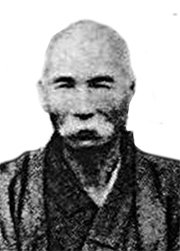 Ankō Itosu (糸洲 安恒? Okinawan: Ichiji Ankō, Japanese: Itosu Ankō, 1831 – 11 March 1915) is considered by many the father of modern karate, although this title is also often given to Gichin Funakoshi because the latter spread karate throughout Japan.
Ankō Itosu (糸洲 安恒? Okinawan: Ichiji Ankō, Japanese: Itosu Ankō, 1831 – 11 March 1915) is considered by many the father of modern karate, although this title is also often given to Gichin Funakoshi because the latter spread karate throughout Japan.
Itosu was born in 1831 and died in 1915. A low-rank Ryūkyūan Pechin, Itosu was small in stature, shy, and introverted as a child. He was raised in a strict home of the keimochi (a family of position), and was educated in the Chinese classics and calligraphy. Itosu began his tode (karate) study under Nagahama Chikudun Pechin.
His study of the art led him to Sokon Matsumura. Part of Itosu’s training was makiwara practice. He once tied a leather sandal to a stone wall in an effort to build a better makiwara. After several strikes, the stone fell from the wall. After relocating the sandal several times, Itosu had destroyed the wall.
Itosu served as a secretary to the last king of the Ryūkyū Kingdom until Japan abolished the Okinawa-based native monarchy in 1879. In 1901, he was instrumental in getting karate introduced into Okinawa’s schools. In 1905, Itosu was a part-time teacher of To-te at Okinawa’s First Junior Prefectural High School. It was here that he developed the systematic method of teaching karate techniques that are still in practice today. He created and introduced the Pinan forms (Heian in Japanese) as learning steps for students, because he felt the older forms (kata in Japanese) were too difficult for schoolchildren to learn. The five Pinan forms were (allegedly) created by drawing from two older forms: kusanku and chiang nan. Itosu is also credited with taking the large Naihanchi form (tekki in Japan) and breaking it into the three well-known modern forms Naihanchi Shodan, Naihanchi Nidan, and Naihanchi Sandan. In 1908, Itosu wrote the influential “Ten Precepts (Tode Jukun) of Karate,” reaching beyond Okinawa to Japan. Itosu’s style of karate, Shorin-ryu, came to be known as Itosu-ryu in recognition of his skill, mastery, and role as teacher to many.
While Itosu did not invent karate himself, he modified the kata (forms) he learned from his master, Matsumura, and taught many karate masters. Itosu’s students included Choyu Motobu (1857–1927), Choki Motobu (1870–1944), Kentsu Yabu (1866–1937), Chomo Hanashiro (1869–1945), Gichin Funakoshi (1868–1957), Moden Yabiku (1880–1941), Kanken Toyama (1888–1966), Chotoku Kyan (1870–1945), Shinpan Shiroma (Gusukuma) (1890–1954), Anbun Tokuda (1886–1945), Kenwa Mabuni (1887–1952), and Chōshin Chibana (1885–1969).
- Other Influential Teachers
–Shimabuku Tatsuo
–Shiroma Jiro
–Lou Kemp (boxing manager)
